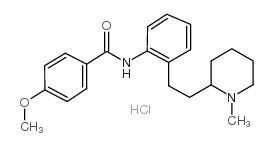Efficacy and safety of combination therapy with amiodarone and type I agents for treatment of inducible ventricular tachycardia.
W Jung, R Mletzko, M Manz, J Nitsch, B Lüderitz
Index: Pacing Clin. Electrophysiol. 16(4 Pt 1) , 778-88, (1993)
Full Text: HTML
Abstract
In a prospective study the efficacy of amiodarone in combination with the three Class I drugs mexiletine, flecainide, or encainide was evaluated consecutively in 12 patients with recurrent ventricular tachycardias (VT) by programmed stimulation. None of the tested drug combinations suppressed induction of sustained VT. The combination of amiodarone with Class IC drugs flecainide and encainide prolonged the cycle length of VT significantly, whereas the combination with mexiletine did not have the same degree of slowing on the VT cycle length. Several proarrhythmic effects occurred during the combination therapy with encainide: (1) frequent, spontaneous recurrences of hemodynamically well tolerated VT in four patients; (2) enhanced inducibility of VT in three patients; (3) impaired termination of VT in three patients. Though a marked increase in QRS and QTc intervals was observed by combined treatment with encainide, no significant correlation could be established between aggravation of arrhythmia and plasma levels of encainide, degree of QRS widening, JT or QTc prolongation. The only predictor for the occurrence of proarrhythmic events was found in left ventricular ejection fraction. These findings suggest that in patients refractory to amiodarone alone or a combination with mexiletine, the combined treatment of amiodarone with other Class IC drugs prolongs the VT cycle length but does not suppress induction of VT during programmed stimulation. Combination therapy of amiodarone with encainide was associated with a high incidence of proarrhythmic effects.
Related Compounds
| Structure | Name/CAS No. | Molecular Formula | Articles |
|---|---|---|---|
 |
Encainide hydrochloride
CAS:66794-74-9 |
C22H29ClN2O2 |
|
Encainide hydrochloride and flecainide acetate: two class 1c...
1987-11-01 [Clin. Pharm. 6(11) , 839-50, (1987)] |
|
ST segment elevation induced by class IC antiarrhythmic agen...
1998-11-01 [J. Cardiovasc. Electrophysiol. 9(11) , 1167-72, (1998)] |
|
Adherence and arrhythmic mortality in the cardiac arrhythmia...
1996-03-01 [Ann. Epidemiol. 6(2) , 93-101, (1996)] |
|
Developmental electrophysiology of encainide and its major m...
1994-01-01 [Biol. Neonate 66(6) , 330-8, (1994)] |
|
Antifibrillary action of class I-IV antiarrhythmic agents in...
1995-07-01 [J. Cardiovasc. Pharmacol. 26(1) , 132-6, (1995)] |